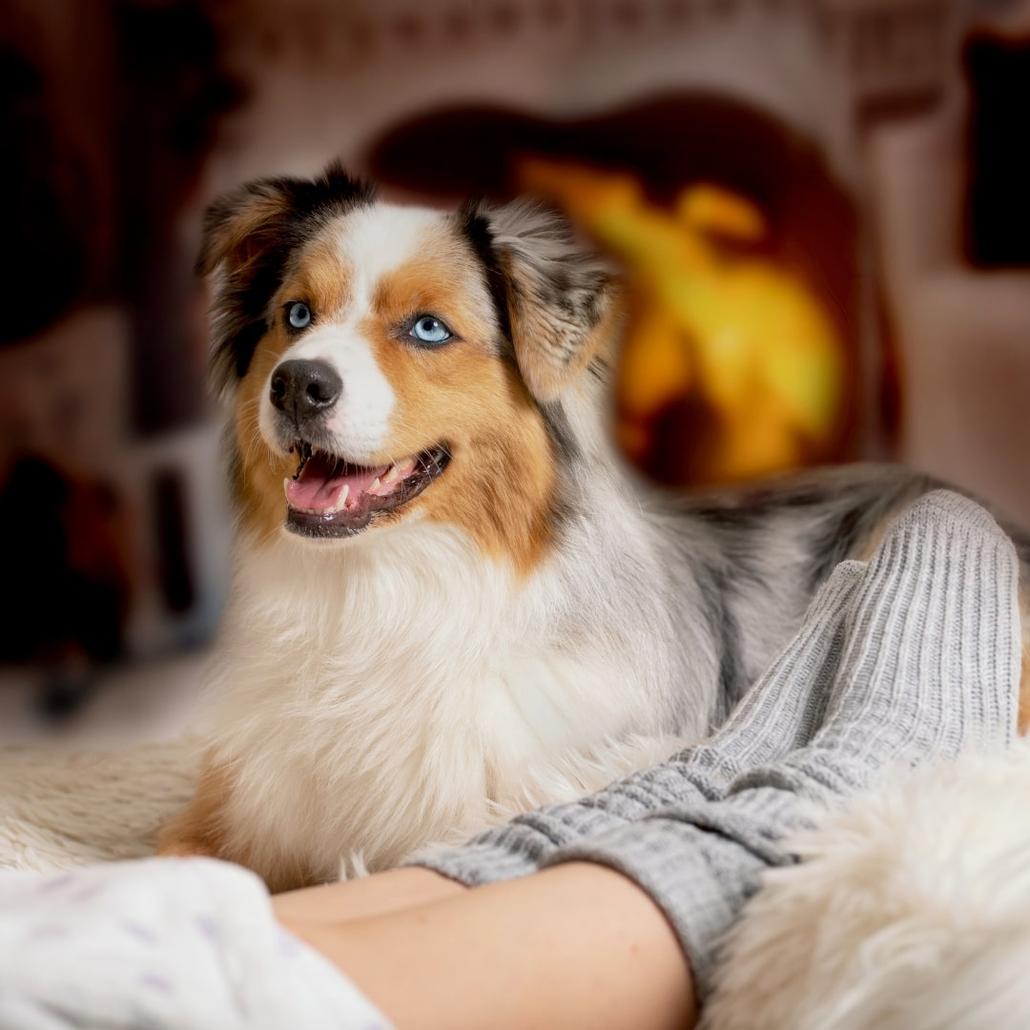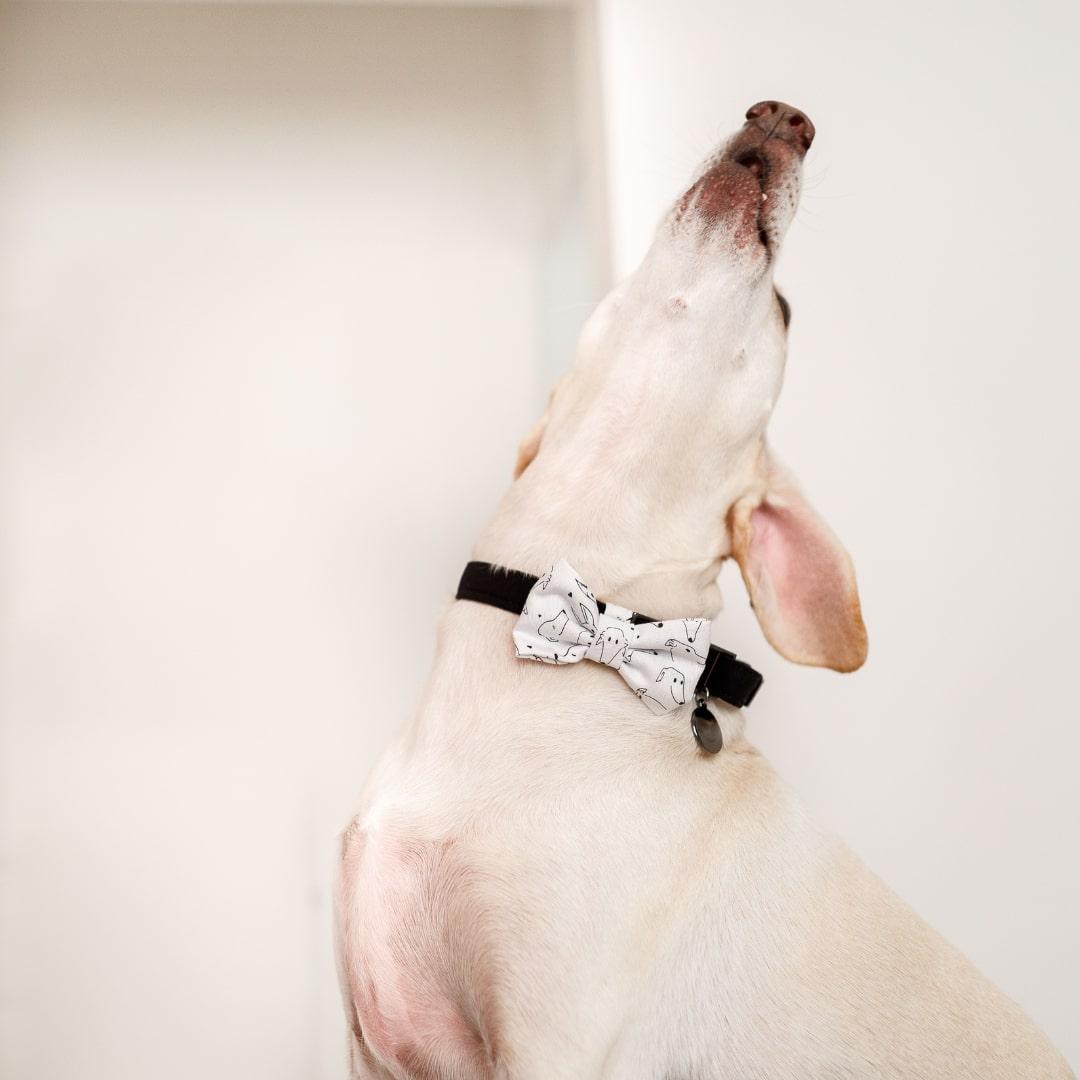3 Tips To Stop Dog Barking
Whether you’ve got a husky howling or a talkative terrier, barking is a behavior that comes naturally to a happy and healthy dog. Excessive barking, however, can be an owner’s nightmare.
If you feel at the end of your tether, don’t panic! You can learn how to get your dog to stop barking by reading on, so you and your furry friend can find a little more peace and quiet.
1) Find The Why & Focus On What You Can Control
The first step to feeling more in control of your dog’s barking is to understand them better. Excessive barking can be caused by a few different factors, so which of the below applies to your dog?
-
Attention-Seeking - used to gain food, attention, or playtime.
-
Territorial - aimed at encroaching animals or humans that are perceived to be invading your pooch’s territory, or are not socialized sufficiently with other dogs.
-
Anxiety - if they feel stressed, threatened, afraid, or suffer from separation anxiety.
- Frustration - caused by a lack of stimulation from being confined, bored, or separated from other dogs or people.
Now you’re a little clearer on what triggers your dog’s barking, you can start to reduce the excessive barking with these little tricks:
-
Remove the trigger - If it’s possible to interrupt the sightline between your dog and the trigger, you could help reduce their need to bark. Whether it’s placing yourself between them and another dog, or closing the curtains when you know the mailman is due.
-
Provide comfort - If you have to leave your dog alone, try putting some dog-friendly music on for them and something that smells like you in their bed. The scent of your item will be familiar and comforting to your dog, whilst playlists online have been specifically curated with noises to help soothe your pooch.
-
Occupy - Dogs are intelligent creatures that require lots of mental stimulation. To release some of that brainpower, try toys or puzzle games that keep your dog occupied and stimulated.
- Tire Them Out - As well as mental energy, many dog breeds require sufficient physical exercise for them to be calm and happy. Tiring your dog out with a long walk can help your pooch to burn off excess energy, meaning that by the time you get home they’re more relaxed, settled, or focused enough for further training.
2) Desentisize
Once you’ve controlled the controllable, it’s time to practice for the moments you can’t always predict. Plan some training sessions aimed at desensitizing your dog to whatever it is that causes them distress, all with a positive approach.
If your dog barks at other dogs or visitors - get some help with practicing this scenario. Start at a distance where your dog does not react. Praise your dog for their attention on you, and for moments of quiet. Gradually decrease the distance between them and the trigger until they come to associate it with praise and yummy treats! Visitors or other dog handlers can also reward the dog themselves, to increase that all-important positive association.
If your dog barks at the door, ask a friend or neighbor to knock on the door for you. When your dog then begins to bark, whether you use metal discs or another form of training, give your dog a “hush” command in a firm, level tone with your palms facing your dog (you don’t want your dog to think you’re joining in with their shouting, after all.) When your dog has quietened, reward this behavior with a treat. Repeat until you’re able to cut off their barking sufficiently with this command.
If your dog barks for attention, make sure they’ve had enough walks and playtime. If so, your best option is to turn your back on your dog and wait until moments of quiet to offer any attention or eye contact.
2) Desentisize
Once you’ve controlled the controllable, it’s time to practice for the moments you can’t always predict. Plan some training sessions aimed at desensitizing your dog to whatever it is that causes them distress, all with a positive approach.
If your dog barks at other dogs or visitors - get some help with practicing this scenario. Start at a distance where your dog does not react. Praise your dog for their attention on you, and for moments of quiet. Gradually decrease the distance between them and the trigger until they come to associate it with praise and yummy treats! Visitors or other dog handlers can also reward the dog themselves, to increase that all-important positive association.
If your dog barks at the door, ask a friend or neighbor to knock on the door for you. When your dog then begins to bark, whether you use metal discs or another form of training, give your dog a “hush” command in a firm, level tone with your palms facing your dog (you don’t want your dog to think you’re joining in with their shouting, after all.) When your dog has quietened, reward this behavior with a treat. Repeat until you’re able to cut off their barking sufficiently with this command.
If your dog barks for attention, make sure they’ve had enough walks and playtime. If so, your best option is to turn your back on your dog and wait until moments of quiet to offer any attention or eye contact.
3) Distract
Sometimes even the best-laid plans don’t work out. There are lots of situations where it’s important for our dogs to be quiet, and it may not be possible to achieve this through training alone. For example, you don’t want your dog approaching and barking at children when on a local walk, or barking at night.
That’s why we created TrueBark™, an ultrasonic bark control. We wanted to create a safe, humane, and shock-free way to distract your dog, using a quick burst of inaudible sound that works to interrupt the behavior. Combining the quiet that follows with your “hush” command and heaps of praise is a great way to help associate quiet with rewards.
Plus, it’s a lightweight and portable solution - so you have peace of mind, knowing that you’ll be able to divert their attention when you need to most.
With the tips above, you can start to make progress towards a calmer, happier dog. Remember progress might not always be a straight line, but with time and consistency, both you and your dog can look forward to some tranquil times ahead.






